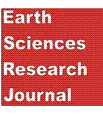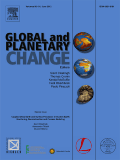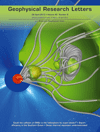
Journal of Advances in Modeling Earth Systems
Scope & Guideline
Elevating Earth Science with Impactful Research and Modeling.
Introduction
Aims and Scopes
- Earth System Modeling:
The journal publishes research that develops and improves models simulating the interactions between different components of the Earth system, including atmospheric, oceanic, and terrestrial processes. - Parameterization Techniques:
A significant focus is on parameterization methods that accurately represent subgrid-scale processes in global models, including convection, turbulence, and cloud microphysics. - Data Assimilation and Uncertainty Quantification:
Research on techniques for assimilating observational data into models to improve predictions and quantify uncertainties associated with model parameters and outputs. - Machine Learning Applications:
The journal includes studies that apply machine learning techniques to enhance modeling capabilities, optimize parameters, and improve the understanding of complex Earth system interactions. - Climate Change and Impact Assessments:
Research addressing the implications of climate change through modeling approaches, including projections of future climate scenarios and their impacts on ecosystems and human systems. - Coupled Models and Multi-Scale Interactions:
The journal promotes the development of coupled models that consider interactions across various spatial and temporal scales, enhancing the understanding of processes such as ocean-atmosphere interactions and land-atmosphere feedbacks.
Trending and Emerging
- Machine Learning and AI Integration:
There is a growing trend towards integrating machine learning and artificial intelligence into Earth system modeling, enhancing the capability to analyze complex datasets and optimize model performance. - High-Resolution and Cloud-Resolving Models:
Recent publications show an increased focus on high-resolution and cloud-resolving models that capture fine-scale processes in the atmosphere, particularly in the context of convection and precipitation. - Interdisciplinary Research:
The journal is increasingly publishing interdisciplinary research that combines insights from climatology, hydrology, ecology, and other fields, reflecting the interconnected nature of Earth systems. - Impact of Climate Extremes:
Research focusing on the modeling of climate extremes, such as heatwaves and heavy precipitation events, is on the rise, highlighting the urgent need to understand and predict the impacts of climate variability. - Ocean-Atmosphere Interactions:
There is a notable increase in studies investigating the interactions between ocean and atmospheric processes, particularly in the context of climate feedbacks and variability. - Model Evaluation and Intercomparison:
Emerging themes include comprehensive model evaluation and intercomparison studies aimed at assessing the performance of different modeling approaches, particularly in the context of CMIP6 and other initiatives.
Declining or Waning
- Traditional Empirical Models:
There has been a noticeable decline in studies focused on traditional empirical modeling approaches, as researchers increasingly favor data-driven and hybrid methodologies that integrate machine learning and advanced statistical techniques. - Single-Component Models:
Research that emphasizes single-component models (e.g., purely atmospheric or oceanic models) is less frequently published, with a growing preference for integrated approaches that account for interactions between multiple Earth system components. - Static Parameterization Approaches:
The once popular static parameterization schemes are waning as dynamic and adaptive parameterization techniques gain traction, allowing for more flexible modeling of complex processes. - Regional Focus Studies:
While regional studies remain essential, there is a noticeable decrease in publications focusing solely on localized phenomena, with a shift towards more global and coupled modeling frameworks that assess broader impacts.
Similar Journals

All Earth
Fostering Interdisciplinary Dialogue on Environmental IssuesAll Earth is an esteemed open-access journal published by Taylor & Francis Ltd, dedicated to multidisciplinary research in the fields of Earth and Planetary Sciences, Global and Planetary Change, as well as Management, Monitoring, Policy, and Law. Since its inception in 2021, All Earth has swiftly positioned itself in the academic community, achieving notable rankings such as Q2 in Earth and Planetary Sciences and Q3 in related fields, showcasing its commitment to high-quality interdisciplinary scholarship. Researchers and professionals can benefit from its accessible content, which contributes to the ongoing discourse on critical environmental issues and innovative solutions for sustainable development. The journal is based in the United Kingdom and continues to be a vital source of information and inspiration for students and scholars aiming to tackle the pressing challenges of our planet through rigorous scientific inquiry and policy analysis.

Vietnam Journal of Earth Sciences
Exploring Earth's Mysteries, Empowering Scientific ProgressThe Vietnam Journal of Earth Sciences, ISSN 0866-7187, is a premier publication from the Publishing House Science and Technology based in Viet Nam, dedicated to fostering advancements in the field of Earth and Planetary Sciences. Operating under a Q2 ranking in the 2023 category of Earth and Planetary Sciences (miscellaneous) and positioned at Rank #62 out of 195 in its general category on Scopus, this journal serves as a critical platform for researchers, professionals, and students seeking to disseminate and engage with high-quality scientific findings. Despite being part of the non-open access model, the journal is committed to providing compelling content, encompassing a range of topics from geological hazards to environmental sustainability, ensuring its relevance and contribution to both local and international scientific communities. With coverage that spans from 2018 to 2024, the journal is poised to continue its role in addressing pressing Earth science issues and fostering collaborations among scholars in an increasingly interconnected world.

Acta Geodaetica et Geophysica
Bridging Geodesy and Geophysics for a Sustainable FutureActa Geodaetica et Geophysica is a prestigious journal published by Springer, focusing on the interdisciplinary domains of geodesy, geology, and geophysics. With an ISSN of 2213-5812 and E-ISSN of 2213-5820, this journal serves as a vital resource for researchers, professionals, and students interested in building and construction, as well as the broader aspects of Earth and planetary sciences. Operating since 2013 and poised to continue until 2024, Acta Geodaetica et Geophysica has consistently maintained its relevance within the academic community, evidenced by its Q3 quartile ranking in the fields of Building and Construction, Geology, and Geophysics for 2023. The journal's Scopus ranks highlight its competitive standing, ranking 118 out of 321 in Geology, and 66 out of 165 in Geophysics, reflecting its impactful contributions to the field. Although this journal does not offer open access, it remains an essential publication that enriches ongoing research and promotes knowledge dissemination in Hungary and beyond. Researchers and academics seeking to advance their studies will find valuable insights and rigorous analyses within its pages, making it a cornerstone of contemporary geoscience literature.

Earth Sciences Research Journal
Bridging Research and Real-World SolutionsThe Earth Sciences Research Journal, published by the UNIV NACIONAL DE COLOMBIA, serves as a pivotal platform for the dissemination of knowledge in the diverse field of Earth and Planetary Sciences since its inception. With an ISSN of 1794-6190 and an E-ISSN of 2339-3459, this Open Access journal has been committed to providing unrestricted access to high-quality research since 2004. Located in Bogotá, Colombia, it has gained recognition within the academic community, achieving a Q3 quartile ranking in Earth and Planetary Sciences and notable Scopus rankings, which further underscores its relevance and reach. Its scope encompasses varied research topics, making it an essential resource for researchers, professionals, and students alike, seeking to contribute to or stay informed on the latest developments in the Earth sciences up to the year 2024. The journal not only anticipates cutting-edge research but also emphasizes collaborative dialogues among global experts, driving forward the conversation on critical issues facing our planet.

GLOBAL AND PLANETARY CHANGE
Advancing Knowledge for a Sustainable FutureGLOBAL AND PLANETARY CHANGE, published by Elsevier, is a premier international journal focused on the critical issues surrounding environmental science, climate change, and planetary dynamics. Since its inception in 1989, this journal has established itself as a leading voice in the field, currently holding a prestigious Q1 ranking in both Global and Planetary Change and Oceanography as of 2023. With a remarkable influence reflected in its Scopus rankings—15th in Earth and Planetary Sciences and 34th in Global and Planetary Change—it serves as an essential platform for researchers, professionals, and students. The journal provides a comprehensive examination of cutting-edge research findings and innovative developments that address the urgent challenges facing our planet. Although it is not an Open Access journal, it remains a vital resource for anyone keen to contribute to or stay informed on the ever-evolving discourse of global environmental change, promoting sustainable solutions for the future.

GEOPHYSICAL RESEARCH LETTERS
Transforming Earth Science Research into Insightful Knowledge.GEOPHYSICAL RESEARCH LETTERS is a renowned academic journal published by the American Geophysical Union that plays a pivotal role in advancing the field of Earth and Planetary Sciences. Established in 1974, this esteemed journal provides a platform for the latest research and innovations in geophysics, including but not limited to, solid earth, atmospheric sciences, and oceanography. With its impressive ranking of #7 out of 165 in Geophysics and #13 out of 195 in General Earth and Planetary Sciences according to Scopus, and being categorized in the Q1 quartile for both fields in 2023, it is a leading choice for academic and professional researchers alike. While GEOPHYSICAL RESEARCH LETTERS does not currently offer open access, it remains committed to disseminating high-quality, peer-reviewed scientific literature. With ongoing contributions expected through to 2024, this journal is essential for those who seek to deepen their understanding and engage with cutting-edge developments in geophysical research. Its influence and reach underscore its significance in shaping the future of geophysical inquiry.

Earth Science Informatics
Harnessing Informatics to Unlock Earth's Secrets.Earth Science Informatics, published by SPRINGER HEIDELBERG, serves as a premier platform for disseminating innovative research in the realm of Earth and Planetary Sciences. With an ISSN of 1865-0473 and an E-ISSN of 1865-0481, this journal offers insightful contributions that leverage informatics and data-driven approaches to address complex geoscientific challenges. As a testament to its impact in the field, it ranks in the Q2 quartile and holds an impressive 73rd percentile rank among 195 journals in the broader **Earth and Planetary Sciences** category, as per Scopus rankings. This journal invites researchers, professionals, and students to explore and contribute to the growing body of knowledge that bridges the gap between informatics and Earth science, fostering advancements in both theoretical frameworks and practical applications. Situated in Germany, at TIERGARTENSTRASSE 17, D-69121 HEIDELBERG, it aims to enhance interdisciplinary collaboration and propel scientific discovery from 2009 to 2024 and beyond, reinforcing its vital role in the academic community.

Science China-Earth Sciences
Leading the Way in Earth Sciences Research and Discourse.Science China-Earth Sciences, published by SCIENCE PRESS, stands as a leading journal in the field of Earth and Planetary Sciences, currently holding a prestigious Q1 ranking in the 2023 category and positioned at Rank #12 out of 195 in Scopus, reflecting its significance with an impressive 94th percentile. Specializing in a wide array of topics including geological processes, environmental science, and planetary studies, the journal serves as a vital resource for researchers, professionals, and students alike, fostering interdisciplinary collaboration and advanced scientific discourse. With a commitment to accessibility and knowledge dissemination, Science China-Earth Sciences offers an Open Access model, ensuring that high-quality research is available to a global audience. Situated in Beijing, China, this journal is dedicated to promoting innovative scientific advancements and understanding the complexities of our planet from 2010 to 2024 and beyond. As such, it remains essential for anyone engaged in the dynamic and evolving field of Earth sciences.

TERRESTRIAL ATMOSPHERIC AND OCEANIC SCIENCES
Bridging Oceans and Atmospheres Through ResearchTERRESTRIAL ATMOSPHERIC AND OCEANIC SCIENCES, published by SpringerNature, is a distinguished peer-reviewed journal that has been an essential platform for innovative research in the fields of atmospheric science, oceanography, and Earth and planetary sciences since its inception. With an Open Access policy established in 1990, the journal ensures wide dissemination of knowledge, allowing researchers, professionals, and students to access cutting-edge findings without restrictions. Based in Switzerland and featuring a comprehensive coverage from 1996 to 2024, the journal currently holds a Q3 ranking across various categories, indicating its growing significance in the scientific community. Although it is positioned within the 39th percentile in Earth and Planetary Sciences, its commitment to fostering high-quality research makes it a valuable resource for advancing understanding of terrestrial environments and their interconnections. Researchers seeking a platform for their work in atmospheric and oceanic sciences will find TERRESTRIAL ATMOSPHERIC AND OCEANIC SCIENCES to be an ideal venue for sharing their insights with a global audience.

Geosciences
Uncovering Geological Insights for a Sustainable Future.Geosciences is a prestigious open-access journal published by MDPI, dedicated to advancing research in the field of Earth and Planetary Sciences. Since its inception in 2011, this journal has fostered a collaborative environment for the dissemination of innovative ideas and findings, contributing significantly to the academic community's understanding of complex geological processes. The journal has achieved a commendable 2023 ranking in the second quartile (Q2) within its category, highlighting its impact and relevance in the field, with a Scopus rank of #41 out of 195 journals, placing it in the 79th percentile. With an aim to span a broad range of topics from environmental geology to planetary exploration, Geosciences is pivotal for researchers, professionals, and students looking for an accessible platform to share their work and stay informed of the latest developments. As a fully open-access journal, it ensures that high-quality research is freely available, fostering greater dissemination of knowledge across the globe.